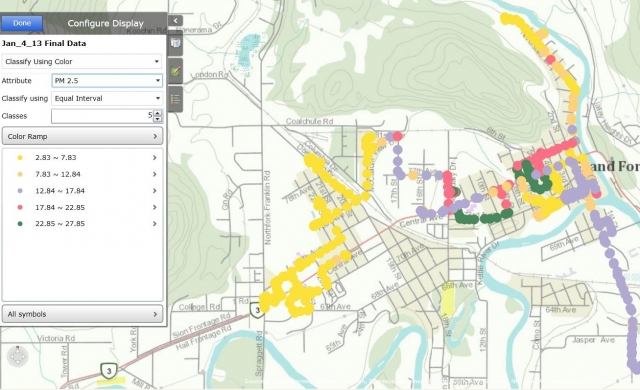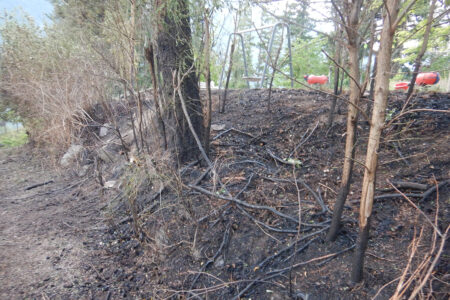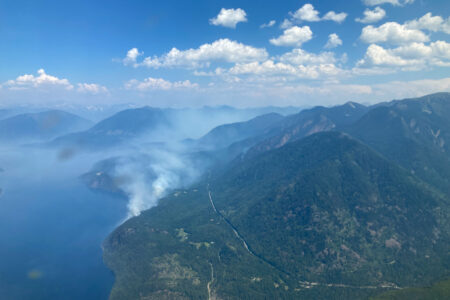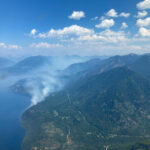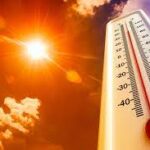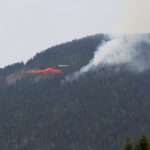Nephlometer continues to sniff its way around Grand Forks, woodstoves on the radar
So far the winter nephlometer studies have shown that particulate matter continues to be a problem in the same areas as during the summer study, with one exception – neighbourhoods with heavy woodstove usage are showing elevated particulate matter.
Last week Grand Forks Environment Committee member and nephlometer project volunteer, Paul Pinard, made a presentation to the committee about what the nephlometer has sniffed up since November.
“We have some of the same ‘hotspots’ we were reading that are higher than other places,” said Pinard during a private interview with The Boundary Sentinel.
It is consistently in the same spots through the summer and the fall. The only difference is that there are higher readings in the residential areas with woodstove use…Personally, I didn’t expect there were so many woodstoves in use.
The study started last July with the help of a summer student. When the summer student had to return to school in the fall, Pinard and Chris Moslin took up the work. The meter has been riding alongside Pinard and in various Citizens On Patrol cars since November and will continue to do so until June.
The nephlometer, which is on loan to the city from the University of Victoria, measures particulate matter, from things like dust and exhaust, in the air. It does not measure gases. That information is helpful in evaluating local air quality. Fine particulate in the air has been linked to aggravating cardiac and respiratory diseases, it also can be seen in the air as a haze and in deposits of dust on vehicles.
Moslin said he was surprised how sensitive the device can be. While driving it around with its hose stuck out the passenger side window he could see the PM reading jump the minute he was driving behind a truck. He saw a similar jump when driving through neighbourhoods where woodstoves were in use.
During the summer study, heat contributed to higher PM or particulate matter readings. According to a report presented to the environment committee in 2012, the highway, Granby Road and Riverside Drive had the most elevated levels of PM readings. The report indicates that poor road maintenance, close proximity to the slag piles, dump traffic and P&D Logging traffic would contribute to those readings. It suggests improving Granby Road maintenance would help reduce those levels. Industrial activity like what happens at Roxul and Interfor, did not, the report concluded, contribute to excessive readings, even with the construction happening at Interfor.
For the next few months the nephlometer will be placed in stationary locations throughout the city rather than being driven around it. Some of the areas being targeted include neighbourhoods where there are a lot of woodstoves in use.
“Now we’re going to experiment with stationary points and see how particulate is spread around town and where it settles – which is sometimes in the strangest places,” said Moslin.
He said one of those unusual ‘hotspots’ is located at the intersection of Highway 3 and Granby Road where they consistently get high readings for PM. Moslin attributes those readings to diesel trucks, which accelerate onto the highway at that intersection.
Moslin sees the Grand Forks study as a door to studies for communities all over the province.
“(The Nephlometer) study shouldn’t be novel, it should be routine,” said Moslin. “If a community like Grand Forks can do it right, larger centers should monitor for it too.”
The data collected over the winter and last summer will then be analyzed and presented to a group of people like a representative from the Interior Health Authority and the University of Victoria to decide what happens next, said Moslin.


